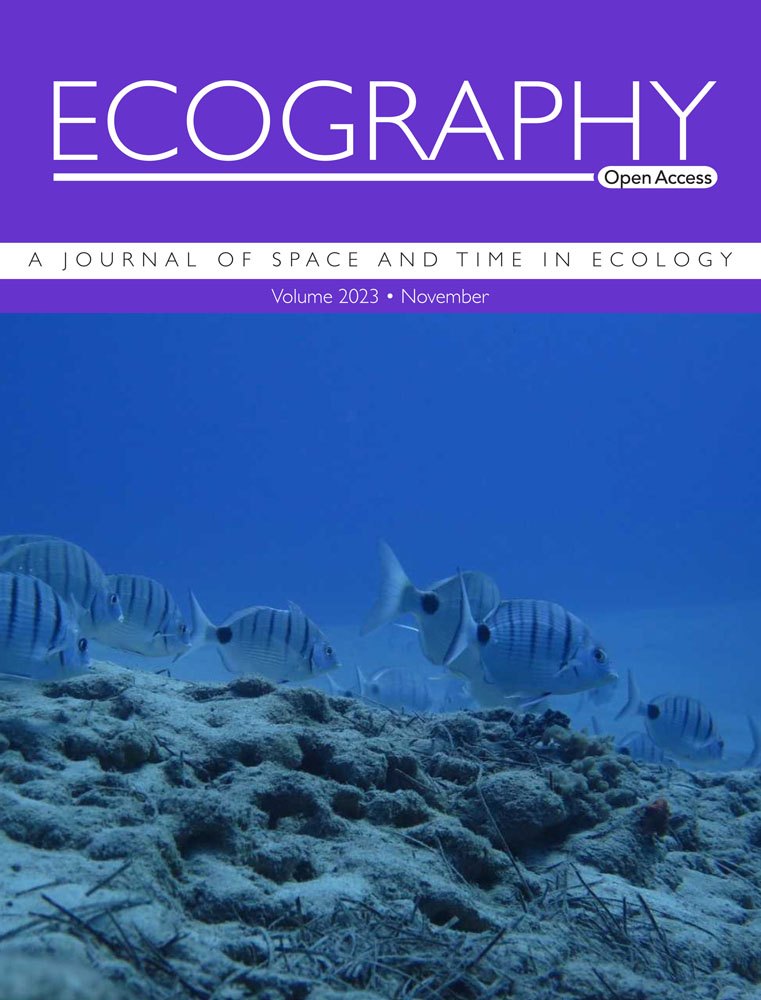Living in the edge: demographic responses driven by density-dependence and pulsed resources in a hibernating mammal
IF 5.4
1区 环境科学与生态学
Q1 BIODIVERSITY CONSERVATION
引用次数: 0
Abstract
Populations at the edge of a species' distribution often encounter more challenging environmental conditions than those at the core, requiring unique adaptations and strategies. However, the demographic processes driving these populations remain poorly understood. This study aims to understand these processes and the population stability of the hibernating edible dormouse under challenging environmental conditions in two Iberian edge populations: Montseny and Montnegre. Despite their geographic proximity, Montnegre is demographically isolated and faces a harsher environment characterized by a drier climate and forests with lower deciduous tree diversity, whereas Montseny remains connected to other populations. Using long-term capture–recapture data, we analyzed the effects of density-dependence and seed availability on population growth, survival, and recruitment of dormice. Results indicated that both populations experienced large fluctuations in population growth rate, with a slight mean decline. Survival fluctuated less and was higher in Montseny than in Montnegre, likely reflecting the harsher conditions of the latter. We found a negative relationship between population size and both growth rate and survival in both populations especially in Montnegre, suggesting significant density-dependent effects that varied with stochastic annual seed abundance. This was likely influenced by the pulsed annual acorn production in Montnegre. Contrarily, high asynchrony between beechnut and acorn abundance in Montseny dampened the pulsed dynamics of seed availability. Interestingly, demographic contribution to population growth was dominated by survival in Montseny and by recruitment in Montnegre. When comparing survival rates with Central European core populations, we found that survival decreased with increasing climatic aridity, but was unrelated to proximity to the core, underscoring the role of spatial heterogeneity in habitat suitability, independent of range position. Our findings emphasize the complex interplay between ecological processes and evolutionary mechanisms at the edge of a species' range, highlighting the critical role of local adaptations and resource availability in shaping population dynamics.生活在边缘:由密度依赖和冬眠哺乳动物的脉冲资源驱动的人口反应
处于物种分布边缘的种群往往比处于核心的种群面临更严峻的环境条件,需要独特的适应和策略。然而,推动这些人口增长的人口统计过程仍然知之甚少。本研究旨在了解这些过程和在具有挑战性的环境条件下两个伊比利亚边缘种群:Montseny和Montnegre的冬眠食用睡鼠的种群稳定性。尽管地理位置接近,但Montnegre在人口上是孤立的,面临着气候干燥、森林落叶树木多样性较低的恶劣环境,而Montseny与其他种群保持着联系。利用长期捕获-再捕获数据,分析了密度依赖性和种子可得性对睡鼠种群生长、存活和招募的影响。结果表明,两个种群的种群增长率波动较大,平均略有下降。蒙塞尼的存活率波动较小,而且高于蒙内格里,这可能反映了后者的严酷条件。我们发现种群大小与两个种群的生长率和存活率呈负相关,特别是在蒙特内格里,这表明种群的密度依赖效应随种子年丰度的随机变化而变化。这可能是受蒙特内格里每年的橡子产量的影响。相反,蒙特塞尼山毛榉和橡子丰度之间的高度不同步抑制了种子有效性的脉冲动态。有趣的是,人口对人口增长的贡献主要是蒙塞尼的生存和蒙内格里的招募。当与中欧核心种群进行存活率比较时,我们发现存活率随着气候干旱程度的增加而下降,但与靠近核心无关,强调了空间异质性在栖息地适宜性中的作用,与范围位置无关。我们的研究结果强调了物种范围边缘的生态过程和进化机制之间复杂的相互作用,强调了当地适应和资源可用性在塑造种群动态中的关键作用。
本文章由计算机程序翻译,如有差异,请以英文原文为准。
求助全文
约1分钟内获得全文
求助全文
来源期刊

Ecography
环境科学-生态学
CiteScore
11.60
自引率
3.40%
发文量
122
审稿时长
8-16 weeks
期刊介绍:
ECOGRAPHY publishes exciting, novel, and important articles that significantly advance understanding of ecological or biodiversity patterns in space or time. Papers focusing on conservation or restoration are welcomed, provided they are anchored in ecological theory and convey a general message that goes beyond a single case study. We encourage papers that seek advancing the field through the development and testing of theory or methodology, or by proposing new tools for analysis or interpretation of ecological phenomena. Manuscripts are expected to address general principles in ecology, though they may do so using a specific model system if they adequately frame the problem relative to a generalized ecological question or problem.
Purely descriptive papers are considered only if breaking new ground and/or describing patterns seldom explored. Studies focused on a single species or single location are generally discouraged unless they make a significant contribution to advancing general theory or understanding of biodiversity patterns and processes. Manuscripts merely confirming or marginally extending results of previous work are unlikely to be considered in Ecography.
Papers are judged by virtue of their originality, appeal to general interest, and their contribution to new developments in studies of spatial and temporal ecological patterns. There are no biases with regard to taxon, biome, or biogeographical area.
 求助内容:
求助内容: 应助结果提醒方式:
应助结果提醒方式:


